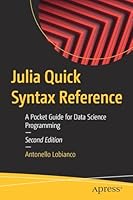
PostgreSQL Replication, 2nd Edition
- Length: 291 pages
- Edition: 2nd Revised edition
- Language: English
- Publisher: Packt Publishing
- Publication Date: 2015-08-03
- ISBN-10: 1783550600
- ISBN-13: 9781783550609
- Sales Rank: #2801963 (See Top 100 Books)
Leverage the power of PostgreSQL replication to make your databases more robust, secure, scalable, and fast
About This Book
- Efficiently replicate PostgreSQL using high-end techniques to protect your data and run your server without interruptions
- Improve reliability, fault-tolerance, and accessibility by maintaining consistency between redundant resources
- Get grips with the latest version of PostgreSQL with this example-based guide
Who This Book Is For
This book is ideal for PostgreSQL administrators who want to set up and understand replication. By the end of the book, you will be able to make your databases more robust and secure by getting to grips with PostgreSQL replication.
What You Will Learn
- Use Point-in-time Recovery to perform data recovery as well as replication
- Set up synchronous as well as asynchronous streaming replication
- Get familiarized with the transaction log, the core component of most replication setups and its purpose
- Improve speed and reliability with an understanding of pgpool and PgBouncer
- Increase your data security and geographically distribute data
- Make your systems more available and secure with Linux High Availability
- Scale out with PL/Proxy and Postgres-XC
- Detect, investigate, and solve replication-related problems
In Detail
PostgreSQL offers a comprehensive set of replication related features. Unleashing the power of PostgreSQL provides you with countless opportunities and a competitive advantage over other database systems.
This book will guide you through the most important concepts of PostgreSQL replication. It contains all the information you need to design and operate replicated setups.
Beginning by giving you an understanding of replication concepts, the PostgreSQL transaction log, and Point-in-time Recovery, we gradually move on to setting up asynchronous and synchronous replication. Next up, you will learn to monitor a PostgreSQL cluster setup, deal with monitoring tools, and then move on to understanding Linux High Availability. Further, we explore widely-used tools such as Slony, SkyTools, Postgres-XC, and walbouncer, and set up PL/Proxy.
Finally, you’ll get acquainted with the new technology of BDR, which allows bidirectional replication in PostgreSQL.
Table of Contents
Chapter 1: Understanding Concepts of Replication
Chapter 2: Understanding the PostgreSQL Transaction Log
Chapter 3: Understanding Point-in-time Recovery
Chapter 4: Setting Up Asynchronous Replication
Chapter 5: Setting Up Synchronous Replication
Chapter 6: Monitoring Your Setup
Chapter 7: Understanding Linux High Availability
Chapter 8: Working with PgBouncer
Chapter 9: Working with pgpool
Chapter 10: Configuring Slony
Chapter 11: Using SkyTools
Chapter 12: Working with Postgres-XC
Chapter 13: Scaling with PL/Proxy
Chapter 14: Scaling with BDR
Chapter 15: Working with Walbouncer







